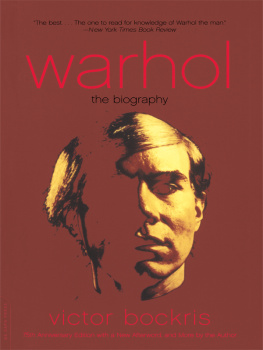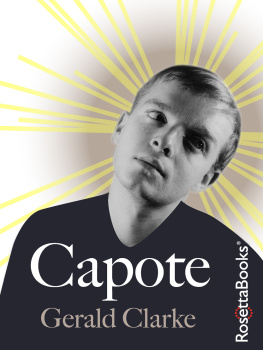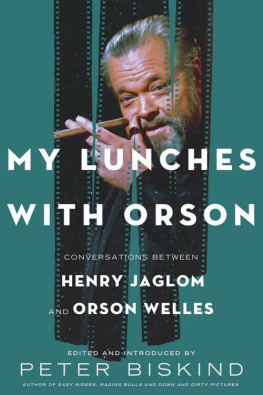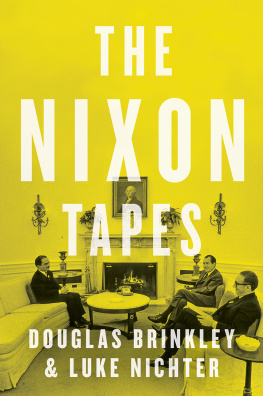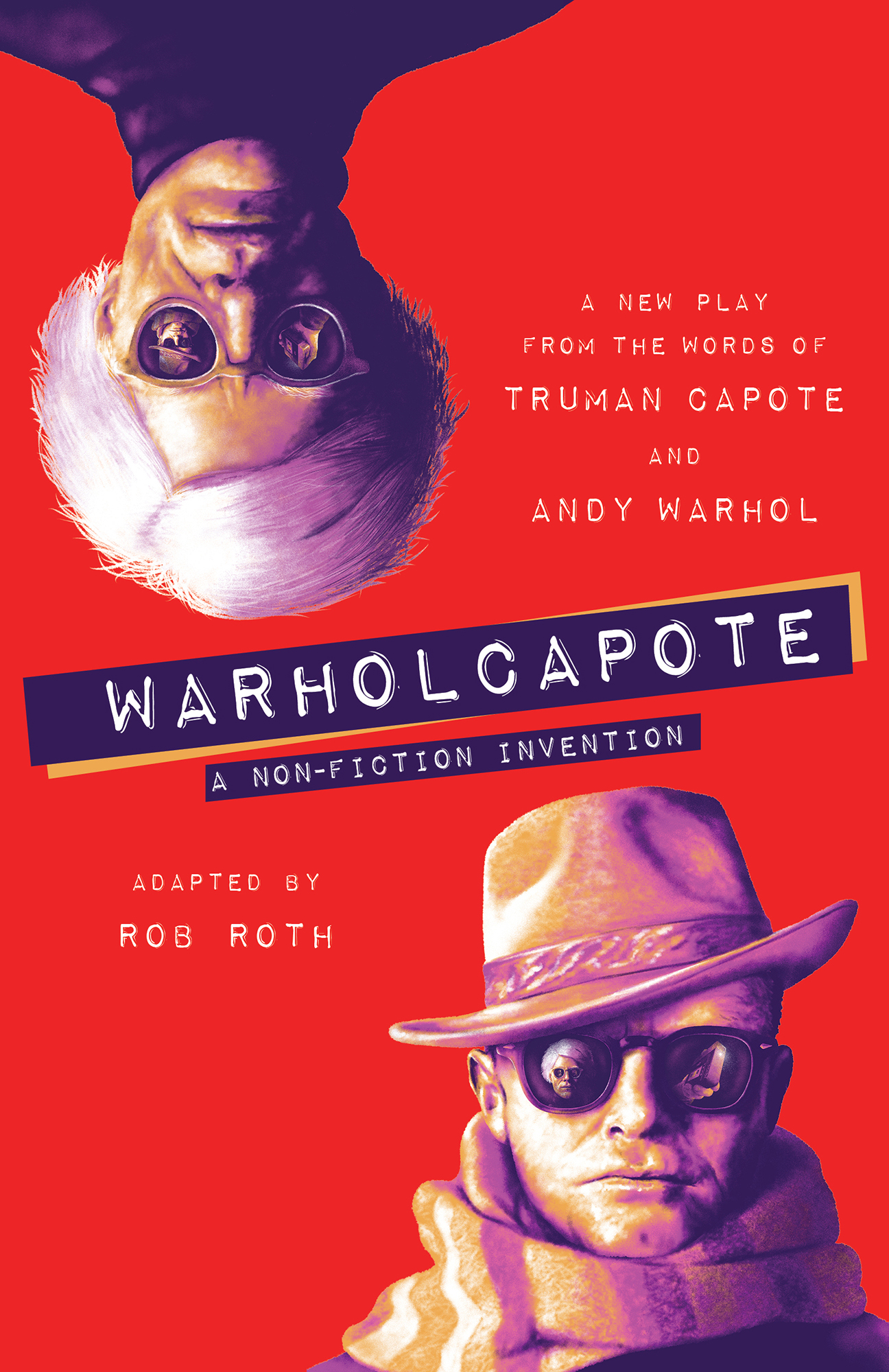Contents
Guide
A New Play from the Words of Truman Capote and Andy Warhol
WARHOLCAPOTE
A Non-Fiction Invention
Adopted by Rob Roth

Simon & Schuster
1230 Avenue of the Americas
New York, NY 10020
www.SimonandSchuster.com
Copyright 2022 by Rob Roth
CAUTION: Professionals and amateurs are hereby warned that all materials in this book, being fully protected under the copyright laws of the United States of America, the British Empire, including the Dominion of Canada, and all other countries of the Berne and Universal Copyright Conventions, is subject to a royalty. All rights including, but not limited to, professional, amateur, motion picture, recording, recitation, lecturing, public reading, radio and television broadcast, and the rights of translation into foreign languages are expressly reserved. Worldwide stage rights are controlled exclusively by the authors. No professional or non-professional performances may be given without obtaining in advance the written permission of the authors representatives and paying the requisite fees or royalties. Particular emphasis is placed on the question of readings and all uses of this play by educational institutions, permission for which must be secured from the authors representatives. Please contact Rob Roths representative with inquiries concerning all rights: F. Richard Pappas, Esq., 2705 Wooldridge Drive, Austin, Texas 78703.
All rights reserved, including the right to reproduce this book or portions thereof in any form whatsoever. For information, address Simon & Schuster Subsidiary Rights Department, 1230 Avenue of the Americas, New York, NY 10020.
First Simon & Schuster hardcover edition September 2022
SIMON & SCHUSTER and colophon are registered trademarks of Simon & Schuster, Inc.
For information about special discounts for bulk purchases, please contact Simon & Schuster Special Sales at 1-866-506-1949 or .
The Simon & Schuster Speakers Bureau can bring authors to your live event. For more information or to book an event, contact the Simon & Schuster Speakers Bureau at 1-866-248-3049 or visit our website at www.simonspeakers.com.
Jacket illustrations by Adam Rabalais
Library of Congress Cataloging-in-Publication Data is available.
ISBN 978-1-9821-0382-8
ISBN 978-1-9821-0384-2 (ebook)
For my parents, who have made me the luckiest black-market baby on Earth
PREFACE
BLAKE GOPNIK
her eyes, squinty and bright green
voiceboy husky
pencil-thin, bony kneed legs
and
fiery dutchboy hair
joel height
worn brown shorts and a yellow polo shirt
Those are a few lines from a whole sheet of notes that an art student named Andrew Warhola wrote, in a knock-kneed cursive hed just invented, about the characters in a new novel hed just read called Other Voices, Other Rooms. A twenty-three-year-old Truman Capote had published it early in 1948, seeing it received with both acclaim and disgustbut always with surprise.
The New York Times said Capote was fascinated by decadence and evil, or perhaps only by weakness. and that his book was filled with sibilant whispering, hinting broadly at its homosexual themes.
Andy Warhols notes on Capotes novel mark the first intersection between two of the most daringly gay creators in postwar America.
Rob Roths WARHOLCAPOTE, based on words actually spoken by the two men, is set in the 1970s and 80s, toward the end of their close connection and not too long before their untimely deaths. But the very special, complex friendship captured by Roth had its roots in where they both came from.
When Capotes book appeared, Warhol was all of nineteen, a junior in college in his native Pittsburgh. He was also just coming out as gay, in a city whose judges soon declared homosexuals to be societys greatest menace and then tasked a police morals squad with eliminating it. (Two gay men were shot within weeks of the squads creation; hundreds of others were soon arrested or blackmailed by the cops.)
How could Warhol not have been floored by a book that was about as openly queer as any writing of its era could be? Its thirteen-year-old hero, Joel Knox, gets described by Capote as defying mainstream notions of what a real boy should look likeHe was too pretty, too delicate and fair-skinned; each of his features was shaped with a sensitive accuracy, and a girlish tenderness softened his eyes. He could have been talking about Warhol at that age. Go on home and cut out paper dolls, sissy-britches, says a playmate to Joel. Thats just what Warhol had done when a childhood strep infection had left him bedridden with spasms for three summers running.
One pan described the book as lavender eyewash and said it was evidence of the disintegration of American culture. For Warhol and certain others, the wounds that such words meant to inflict on Capote came with as much glory as shame: They were the stigmata of that moment in gay culture. Like all such markers of martyrdom, they stand as a sign of some kind of victory over your tormentors.
A contemporary of Warhol and Capotes remembered how, surrounded in college by truculent veterans on the G.I. Bill, the campus aesthetes found each other through Capotes new book: To walk with Capote in your grasp was as distinctive, and as dissenting from the worlds values, as a monks habit.
In the twenty-first century, it is almost impossible to fully understand what it meant to be gay in postwar America, when both Warhol and Capote came of age, and came out. Two years after Other Voices appeared, the US Senate produced a report called Employment of Homosexuals and Other Sex Perverts in Government that included, among its other lies and brutalities, the assertion that one homosexual can pollute a Government office. The Lavender Scare that followed stole the livelihoods of countless gay Americans. And yet Warhol and Capote dared to build their creative personas, and many of their creations, around limp wrists and levitating loafers.
In an amazing watershed for queer culture, Gore Vidal published a novel of gay life just a week before Capotes, and it was even more clearly and polemically out. But with prose as spare and muscular as any straight authors, the novel comes closer to arguing for the potential normalcy of gay lifefor its strong wrists and sensible shoesthan for the virtues of its exceptional culture. Warhol and Capote were almost unique in accepting, and in helping to create, a gay culture and art that could be proudly other. You can feel that in almost every word they utter in Roths play; you can also feel how hard-won that acceptance was, even for the two men who did the accepting.
Eighteen months after the appearance of Other Voices Warhol moved to Capotes New York, where his interest in the writer turned into proper obsession.
I started getting these letters from somebody who called himself Andy Warhol. They were, you know, fan letters, Capote recalled. But not answering these Warhol letters didnt seem to faze him at all. I became Andys Shirley Temple. After a while I began getting letters from him every day! That pretty much squares with all kinds of records that document Warhols crush. Capotes agent wrote to the young artist asking him to stop with the notes but was clearly more amused than distressed by his antics: [Capote] said hed been receiving some inane notes from one Warhol and thinks you must be slightly insane. So of course I told him you were.


